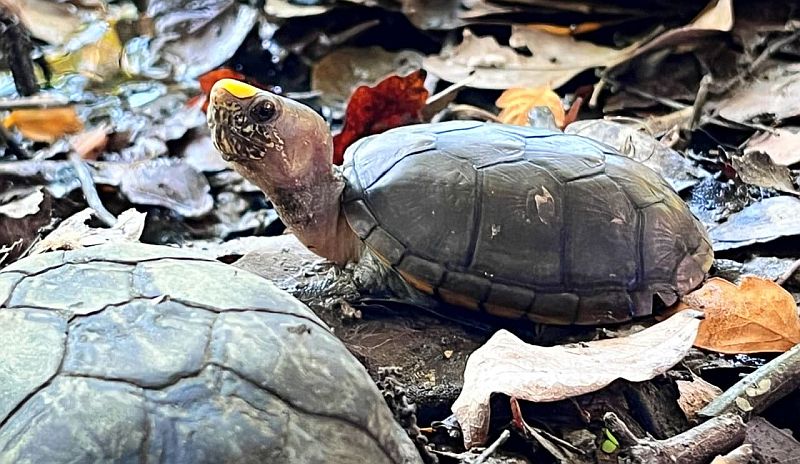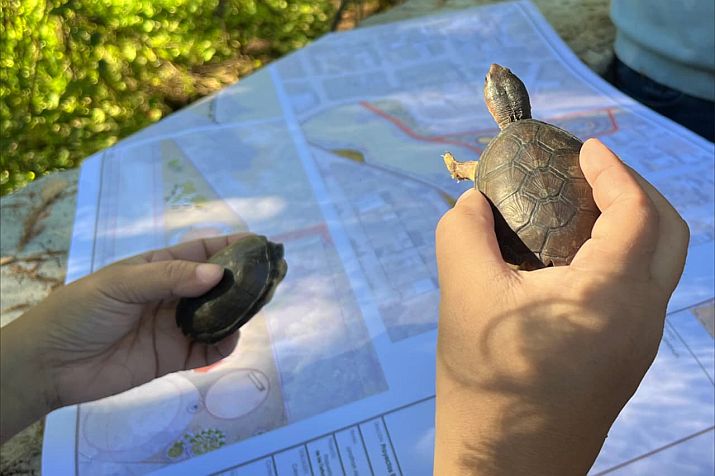
Puerto Vallarta, Jalisco, Mexico – The administration of Luis Munguía is championing a crucial environmental cause: the conservation of the Tortuga Casquito Puerto Vallarta Mud Turtle, a unique species recently identified in the region. This focused effort aims to secure the future of this small reptile, whose existence has been immediately threatened by the rapid growth of local urban areas.

A Recent Discovery and Immediate Concern
Just seven years ago, in 2018, a team of researchers, including experts from UNAM, introduced the world to a new species: the Vallarta Casquito (Kinosternon vogti). These creatures belong to the genus Kinosternon, commonly known as helmet turtles due to the shape of their shells. The small turtles measure only 10–15 centimeters (3.9–5.9 inches) in carapace length and have distinct markings: males sport a yellow spot on their nose, while females have a brown spot.
While the discovery was exciting, it quickly highlighted a serious problem. These turtles, which inhabit freshwater lagoons and floodplains in the Banderas Bay region, have seen their natural home drastically shrink due to increasing urbanization. It is estimated that their remaining habitat consists of only 20 square kilometers, a fraction of the 300 square kilometers they once occupied. This territory is now severely fragmented, putting the species at high risk of extinction.

Laguna Tomasa: A Focal Point for Conservation
The municipal government is making the protection of the Vallarta Tortuga Casquito a top priority, with the Laguna Tomasa rehabilitation project initiated by Estudiantes Conservando la Naturaleza, set to launch soon.
This specific lagoon, located in Colonia Villas Universidad, is a critical area for local biodiversity. In addition to the endangered Mud Turtle, it supports populations of other vulnerable species, including the river crocodile, green iguana, spiny-tailed iguana, and the opossum, along with favorable conditions for migratory birds.
The core goal of the project is to transform Laguna Tomasa into a dedicated ecological park focused on conservation. Mayor Munguía, during a recent tour of the site, expressed his dedication, stating, “What they are doing inspires me to support the cause in many ways, such as the rehabilitation of this space and providing personnel to ensure the continued conservation of this species.”

Key Initiatives for the Future
The project will be carried out in close collaboration with Students Conserving Nature and local residents, blending community engagement with scientific effort. The rehabilitation of Laguna Tomasa is just one part of a comprehensive conservation strategy. Other planned actions include:
- Declaration of a Day for the Mexican Mud Turtle: An initiative to be presented to the City Council to raise public awareness.
- Release of Specimens: The safe reintroduction of turtles into their natural habitat.
- Habitat Preservation: Securing and conserving the remaining native areas essential for the species’ survival.
Showing immediate commitment, the mayor participated in the release of six Mexican mud turtles into the habitat, alongside councilwoman Magdalena Urbina and Vincent O’Halloran Lepe, manager of Sustainable City and Territory.
The municipal government has signaled the importance of this work by scheduling the investment for the project to begin in January 2026, making it a clear priority for the administration. The collaborative and positive steps being taken are instilling hope for the long-term survival of this unique Puerto Vallarta resident.

We need your support to keep Banderas News thriving. As more and more news outlets resort to paywalls, we remain steadfast in our mission to provide free, quality journalism to Puerto Vallarta residents and visitors. Your contribution helps us maintain this commitment and continue serving our community.





